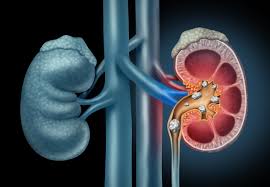1. What Are Indices in Maths?
Indices (also known as exponents or powers) indicate how many times a number (the base) is multiplied by itself.
- Example: In , the base is 2, and the exponent (index) is 3, meaning .
- Rules:
- (Multiplication)
- (Division)
- (Power of a Power)
2. What Does “At Least” Mean in Math?
“At least” means a minimum value that could be equal to or greater than the stated number.
- Example: “At least 5” means 5 or any number greater than 5.
3. What Does Big E Mean in Math?
The “Big E” ( ) is the symbol for summation in mathematics, used to indicate the sum of a series of terms.
- Example:
This means summing the values of from 1 to 5.
4. What Does “Diminished” Mean in Math?
In math, diminished means reduced or made smaller.
- Example: A number diminished by 3 means the number minus 3.
5. What Does e Do in Math?
The constant (approximately 2.718) is the base of natural logarithms and is widely used in exponential growth, calculus, and complex numbers.
- Example: In exponential growth, models compound growth over time.
6. What Does “Of” Mean in Math Fractions?
“Of” in math usually implies multiplication, especially in fractions.
- Example: Half of 8 means .
7. What Does “Yield” Mean in Math?
Yield in math typically refers to the result or outcome of a calculation.
- Example: The expression yields the result 5.
8. What Is a Dependent Variable in Math?
A dependent variable is the output or result that depends on the value of the independent variable.
- Example: In , is the dependent variable because its value depends on .
9. What Is a Mirror Line in Math?
A mirror line (or line of symmetry) is a line that divides a figure into two equal parts, where each part is a mirror image of the other.
- Example: The vertical line is a mirror line for the graph of .
10. What Is a Word Problem in Math?
A word problem is a math problem presented in the form of a real-life scenario, requiring interpretation and solving using mathematical operations.
- Example: “If you have 10 apples and eat 3, how many apples are left?”
11. What Is an Altitude in Math?
The altitude in geometry is the perpendicular distance from a vertex to the opposite side (or its extension) in a triangle.
- Example: In a triangle, the altitude helps calculate the area using .
12. What Is Commutative Property in Math?
The commutative property states that the order of numbers in addition or multiplication doesn’t affect the result.
- Addition:
- Multiplication:
13. What Is Factorization in Math?
Factorization is the process of breaking down a number or expression into its factors (numbers or expressions that, when multiplied together, give the original number or expression).
- Example: (prime factorization).
14. What Is Mental Math?
Mental math refers to performing calculations in your head, without using paper, a calculator, or other aids.
- Example: Multiplying 25 by 4 mentally by breaking it down into .
15. What Is Negative i in Math?
The number i is the imaginary unit, defined as . Negative refers to , which is simply the additive inverse of .
- Example: If , then is the negative of this value.
16. What Is the Definition of Expression in Math?
A mathematical expression is a combination of numbers, variables, and operators (like +, −, ×, ÷) that represents a value.
- Example: is an algebraic expression.
17. What Is the Difference Between Basic and Standard Maths?
- Basic Maths: Refers to foundational mathematics, usually covering arithmetic, basic algebra, and geometry. It is simpler and is aimed at students who may not pursue higher-level math.
- Standard Maths: Involves more complex topics, including algebra, geometry, trigonometry, and calculus, and is intended for students planning to study math-intensive subjects further.
18. What Is the Meaning of Proportion in Math?
Proportion refers to the relationship between two ratios or fractions that are equal to each other.
- Example: If , then a and are in proportion to and .
19. What Is Vedic Maths?
Vedic Maths is a collection of ancient mathematical techniques or “sutras” from India, designed to solve mathematical problems more efficiently. It includes shortcuts and tricks for arithmetic, algebra, and geometry.
- Example: One of the sutras, “Vertically and Crosswise,” allows rapid multiplication of two-digit numbers.
20. What to Do After a Maths Degree?
After completing a maths degree, you can pursue various career paths:
- Data Science or Analytics: Using math to interpret complex data and make decisions.
- Actuarial Science: Applying probability and statistics to assess risk in finance or insurance.
- Teaching or Academia: Becoming a math teacher or pursuing research in mathematics.
- Finance and Investment: Working in quantitative finance, financial analysis, or banking.
- Software Engineering: Using problem-solving skills to write and optimize code.
- Further Studies: Pursue advanced degrees (Master’s, PhD) in mathematics, applied math, or related fields like physics, computer science, or engineering.






